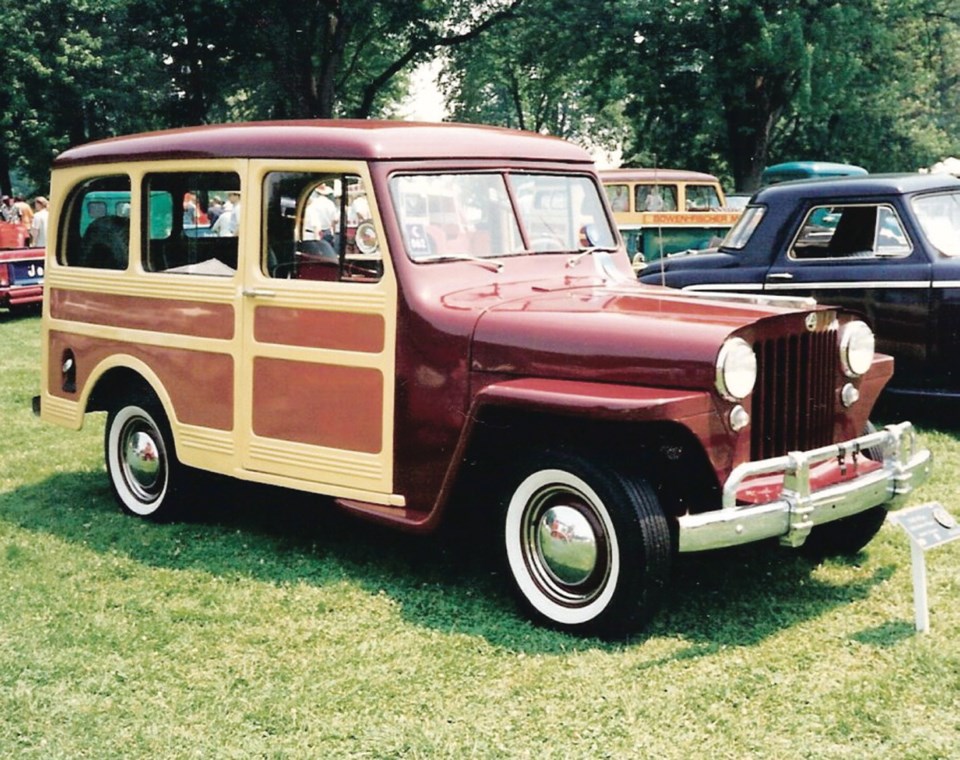Modern Jeep wagons/SUVs can trace their heritage back seven decades to a little station wagon introduced in 1946. It was a direct descendant of the famous Second World War Willys-Overland four-wheel drive, quarter-ton, general purpose utility vehicle known as the Jeep.
During the war, almost 600,000 of these tough, versatile little military machines were built by Willys, and Ford under licence. But as peace neared, Willys-Overland of Toledo, Ohio, like all automakers, was anxious to return to civilian production.
The company considered its immediate pre-war cars unsuitable for the postwar market, so during the war it engaged Brooks Stevens, a noted industrial designer from Milwaukee, to design a postwar Willys car.
Unfortunately, the only prototype was destroyed in a train collision, causing Willys to shelve its immediate plans for postwar car production. They would eventually return to it in 1952 with the compact Aero Willys sedan.
As the end of the war neared, Willys management, particularly its new president, Charles (Cast Iron Charlie) Sorensen, realized the deep reservoir of goodwill the Jeep had developed.
Sorensen had recently joined W-O after 40 years at Ford, starting as a pattern maker and rising to production wizard and Henry Ford confidant until he drifted out of favour with senile old Henry.
It was realized that the thousands of veterans who would return with fond memories of the Jeep’s universality and toughness represented a wonderful source of potential customers. Willys hoped to attract them by converting the Jeep to peacetime use.
It was a simple enough task to turn the military Jeep into the CJ (Civilian Jeep). Just take off accessories such as shovels and axe holders, install more comfortable seats and decent upholstery and paint them in appealing colours.
The little CJ Jeep was initially promoted as a dual-purpose machine for agricultural and road use. It proved better suited to road travel and off-road recreational pursuits, so the farming aspirations were abandoned.
With successful transition to the CJ complete, the company became even more enthusiastic about other possible models. It again hired Stevens to come to Toledo and design a line of civilian Jeep-based models, including station wagons, pickup trucks and panel deliveries.
Astute production man that he was, Sorensen laid down a few rules for Stevens. These included retaining the Jeep front-end styling, not using any wood and designing shallow-draw metal stampings without compound curves so the Jeep body panels would be easier and cheaper to stamp.
Stevens’s first result was the all-steel Jeep station wagon. His design was immediately accepted and it went into production in July 1946. It was the first such production passenger vehicle, although the eight-passenger all-steel Chevrolet Suburban Carryall had come out in 1935 as a kind of station wagon. But being based on a panel truck, it was more commercial vehicle than passenger carrier.
Crosley would market a tiny all-steel wagon in 1947, and Plymouth would introduce the popular car-based Suburban steel wagon in 1949, but Willys was first with an all-steel wagon.
Although not car-based, the new Jeep wagon was well accepted and Willys produced 6,534 of them during the first year. With more production capacity, they could have sold many more in the postwar car-starved market.
The military Jeep had become famous for its four-wheel-drive, go-anywhere capability so it was a little surprising that the Jeep wagon had rear-wheel drive only. This was probably because Willys advertising was promoting it as a car rather than a utility vehicle. Unlike the Jeep, it had the advantage of independent front suspension for a smoother ride.
Power came from the Jeep’s 2.2-litre, 69 horsepower, side-valve, “Go Devil” four-cylinder engine that could trace its origins back to the 1926 Whippet car, although it had been considerably upgraded over the years. Power went through a three-speed-plus-overdrive manual transmission.
The front end and top of all early Jeep wagons were painted maroon. The passenger compartment from the windshield back was finished in a combination of yellow and light brown that was intended to look like birch and mahogany. From a distance, it almost did.
Sales jumped to 33,214 for 1947, a station wagon record, proving this new Jeep was a success. The wagon was gradually refined and improved, and four-wheel drive became an option in 1949.
Bigger and better engines were fitted, and although it suffered some ups and downs in sales — and a new parent when Kaiser bought Willys-Overland in 1953 and renamed it Willys Motors Inc. — the Jeep wagon lasted until 1962. It was then replaced by the very successful Jeep Wagoneer, also designed by Stevens.
The Jeep station wagon made history by pioneering a new type of practical vehicle that would exploit the Jeep’s reputation and become a very popular model.



